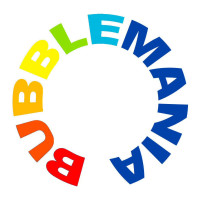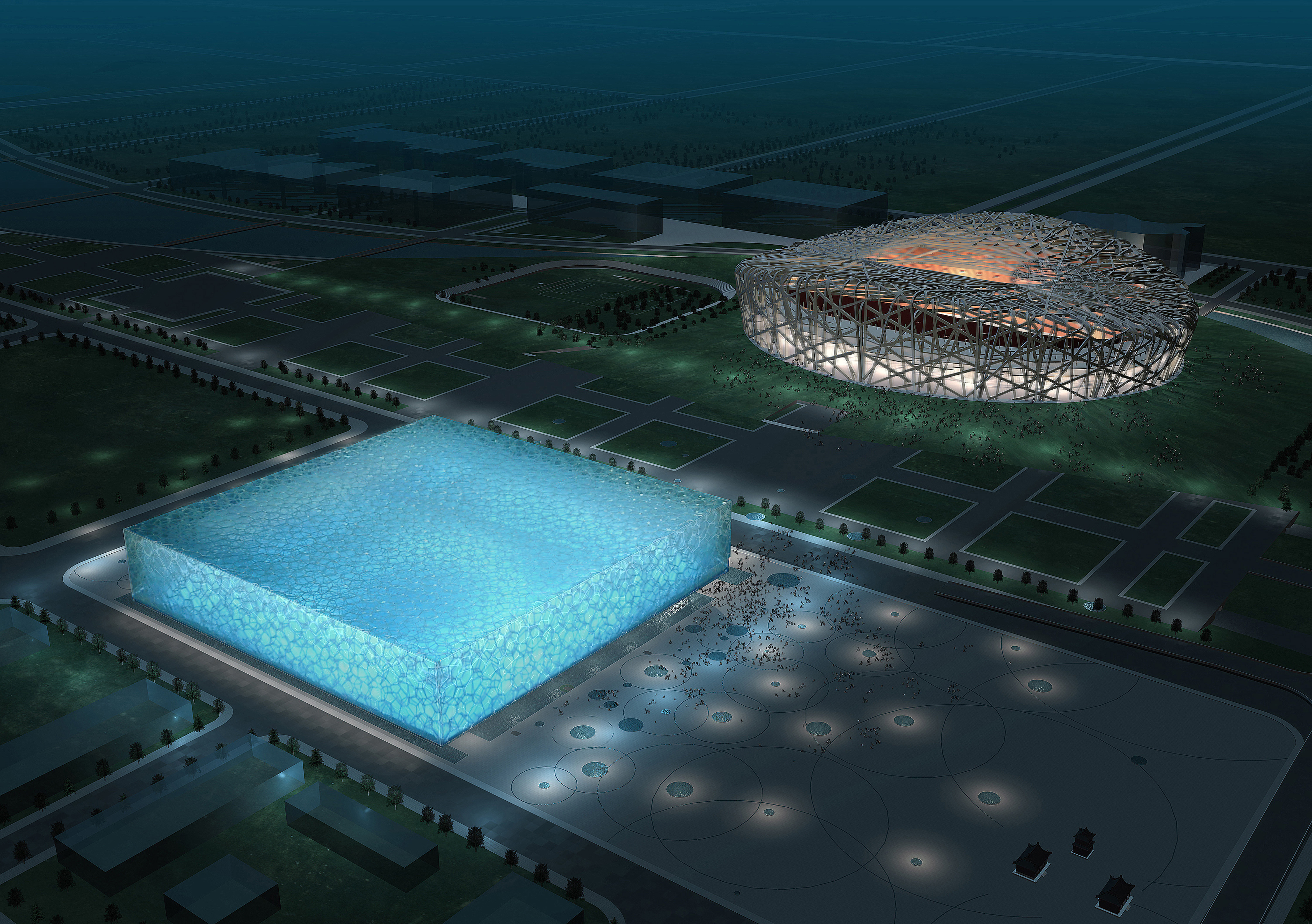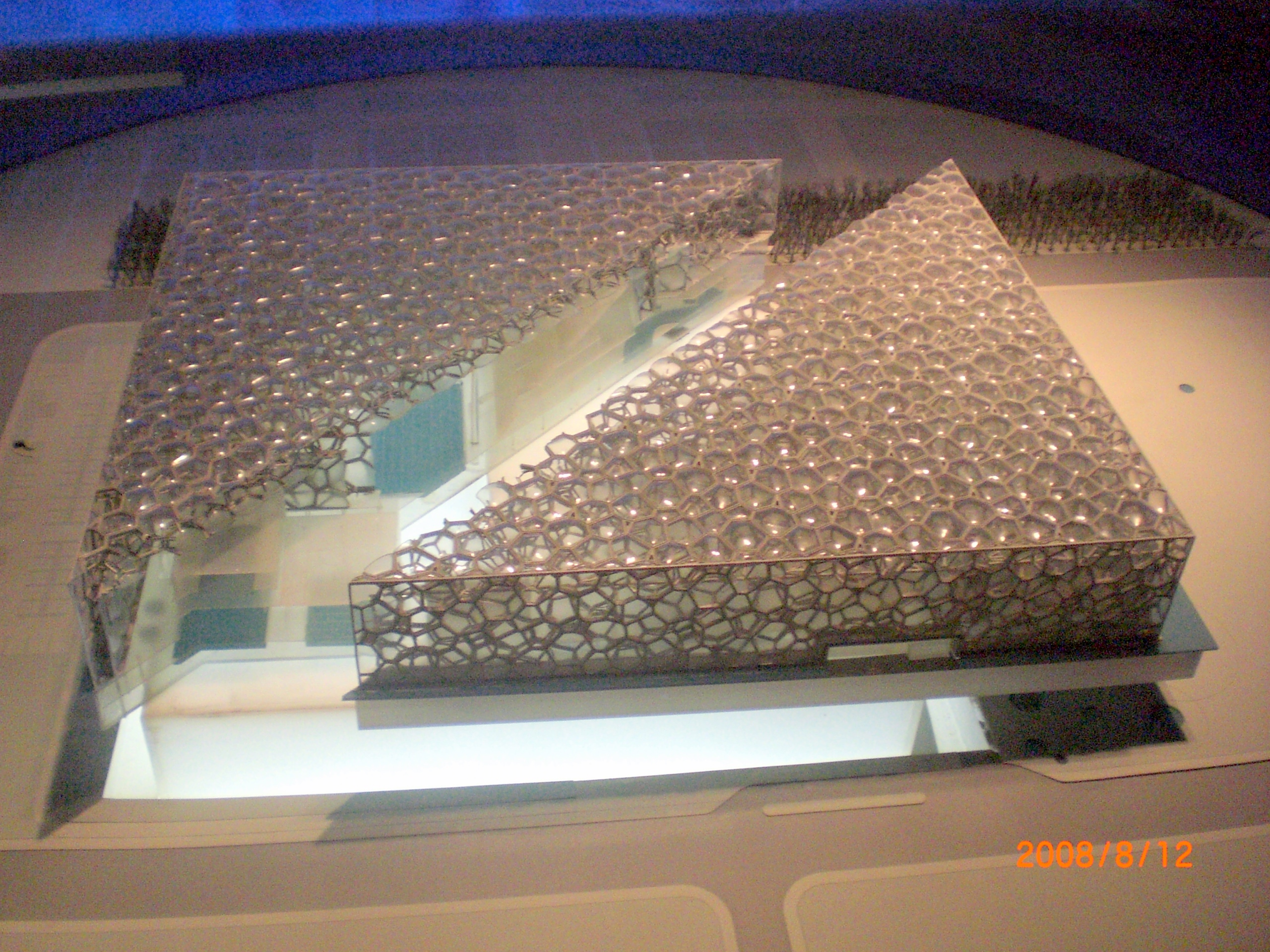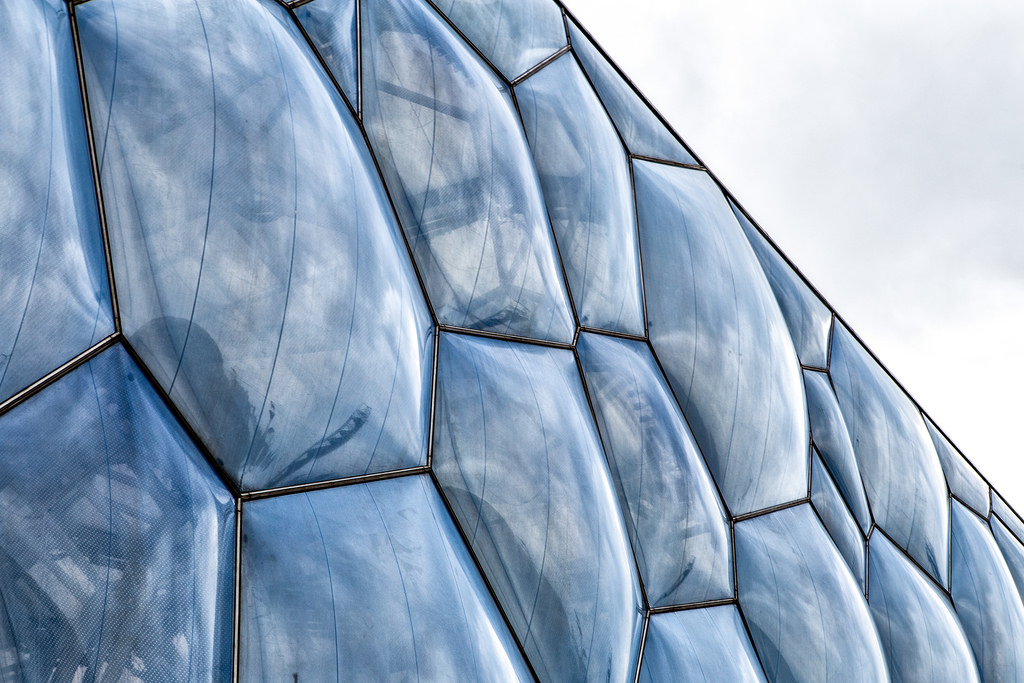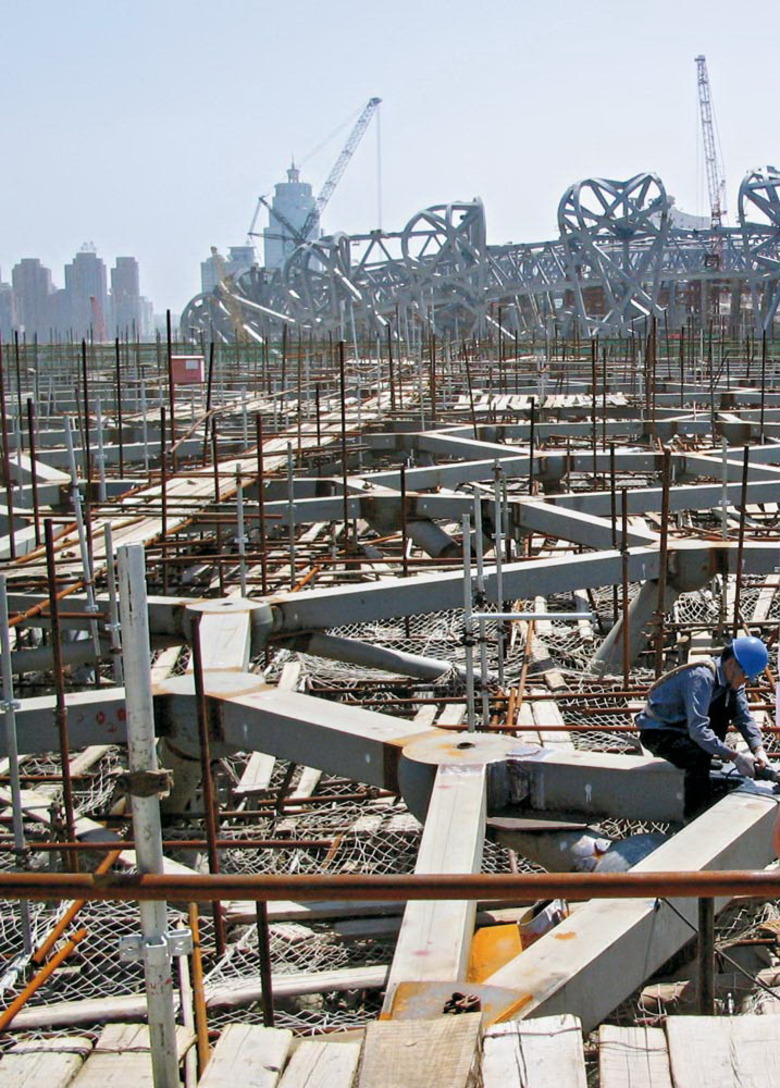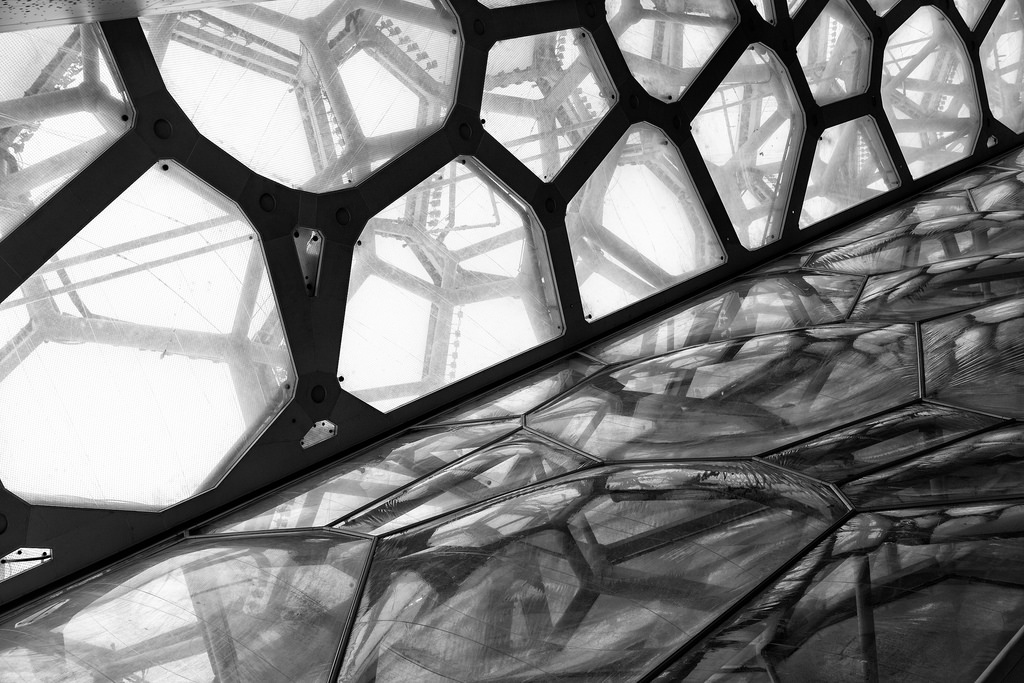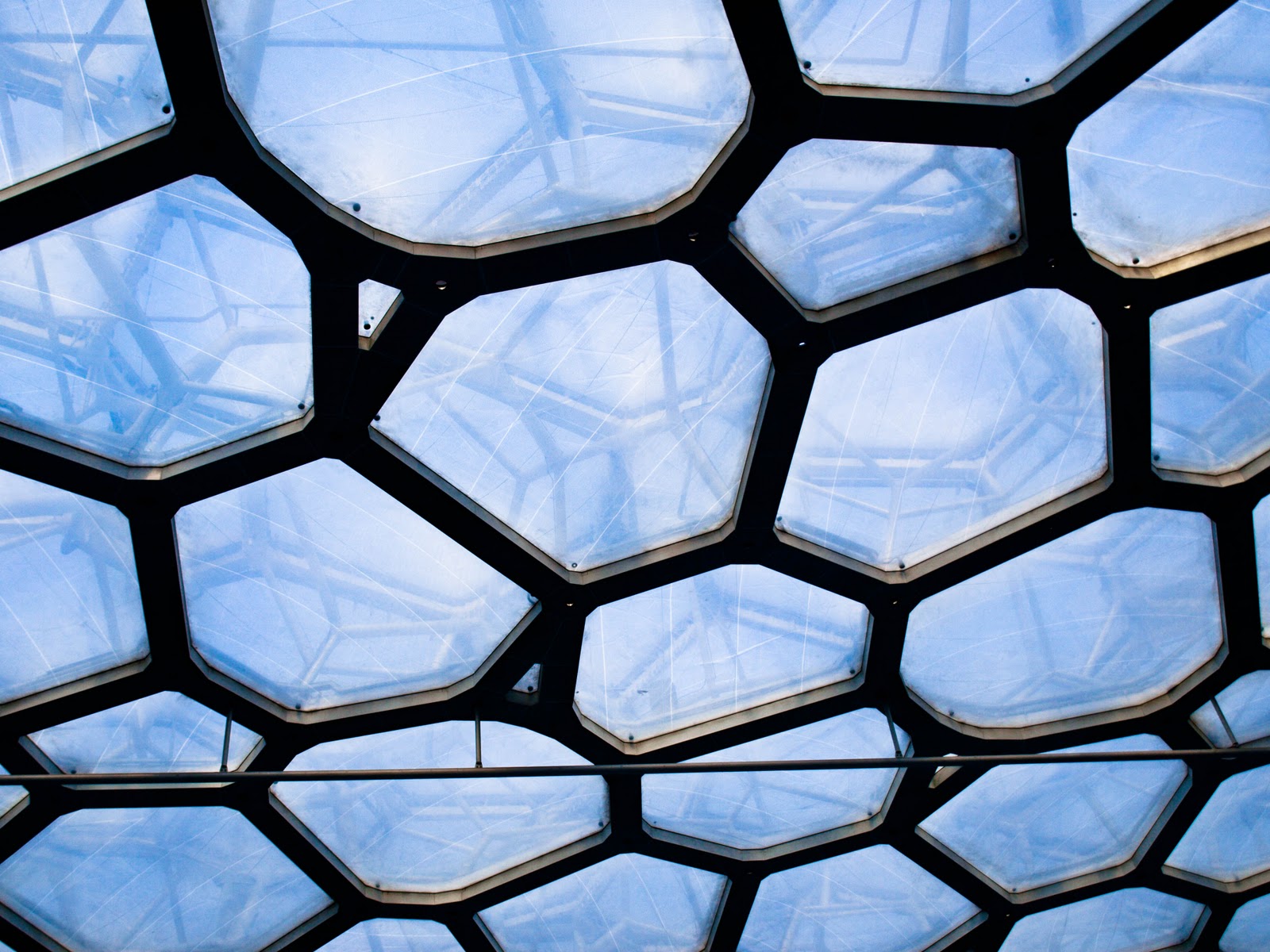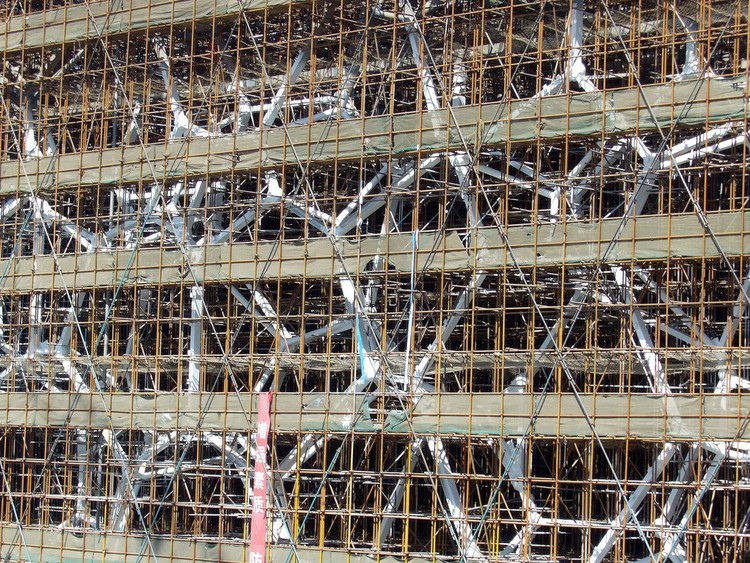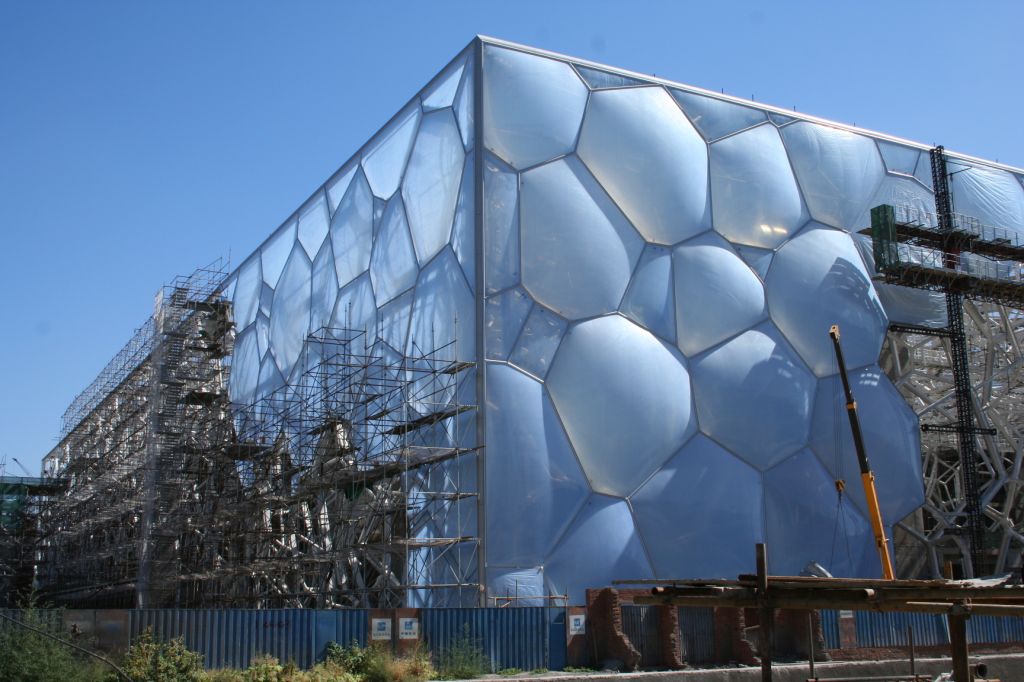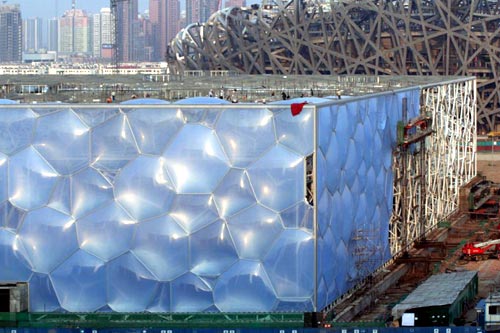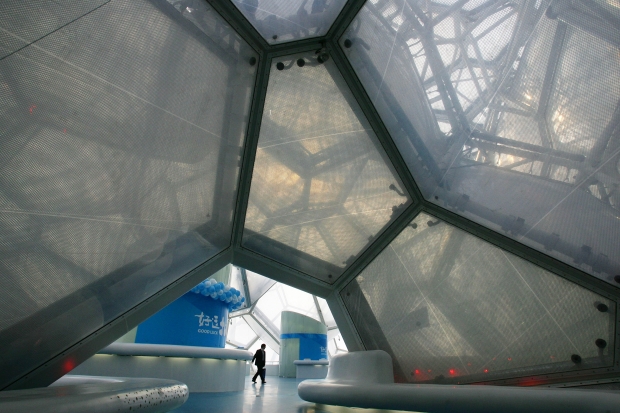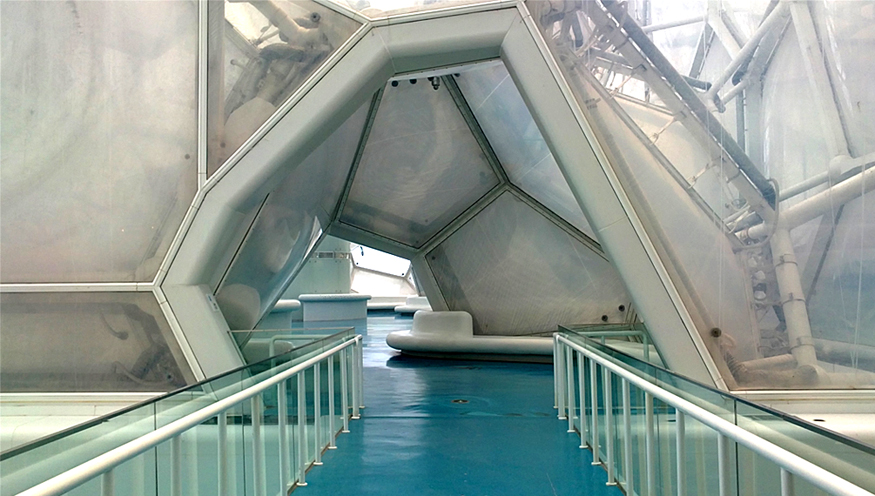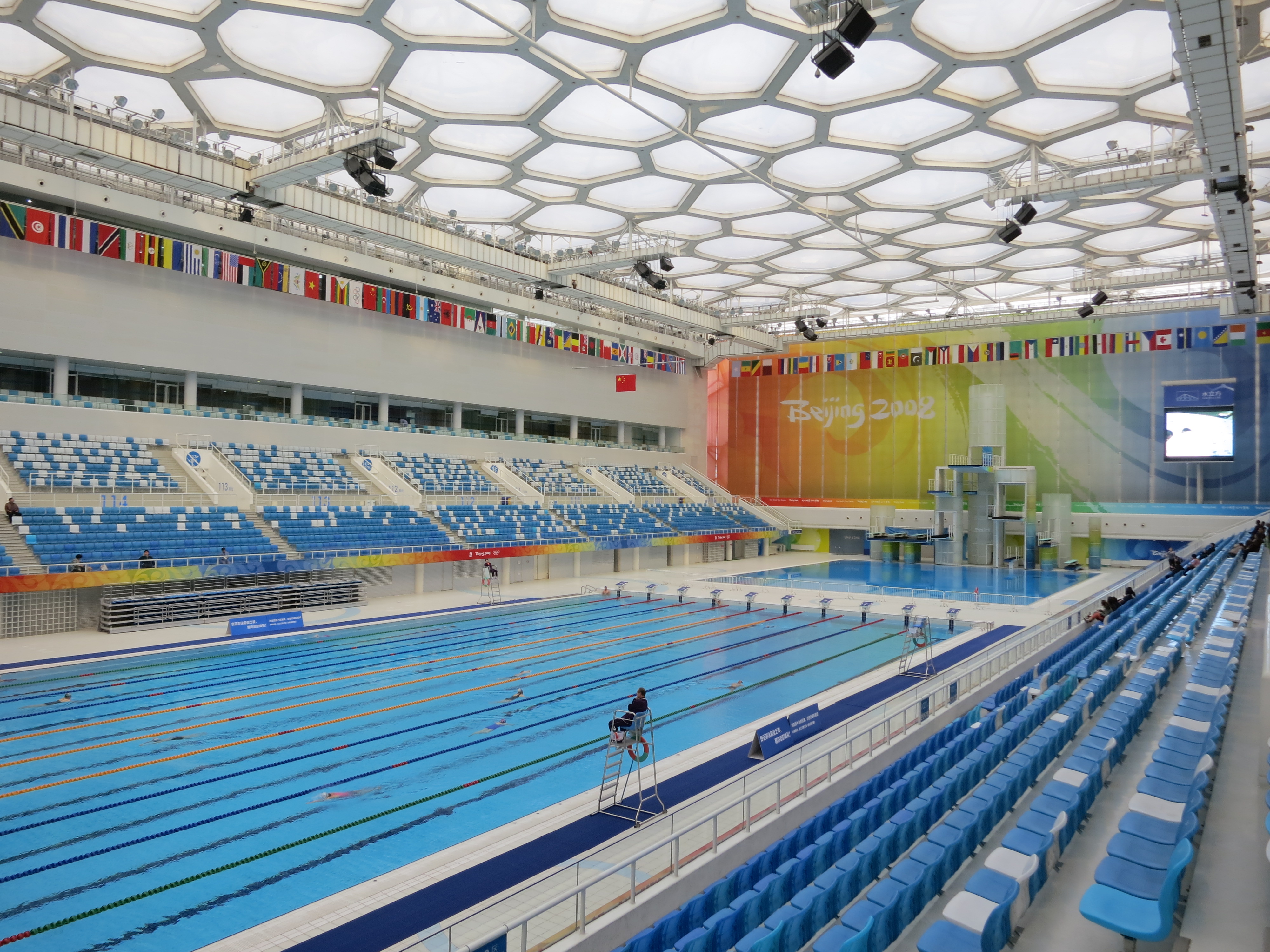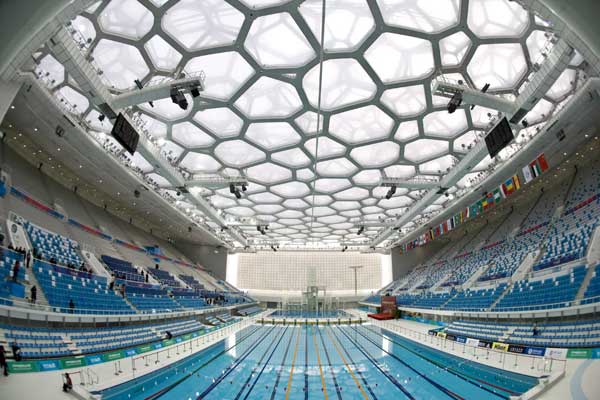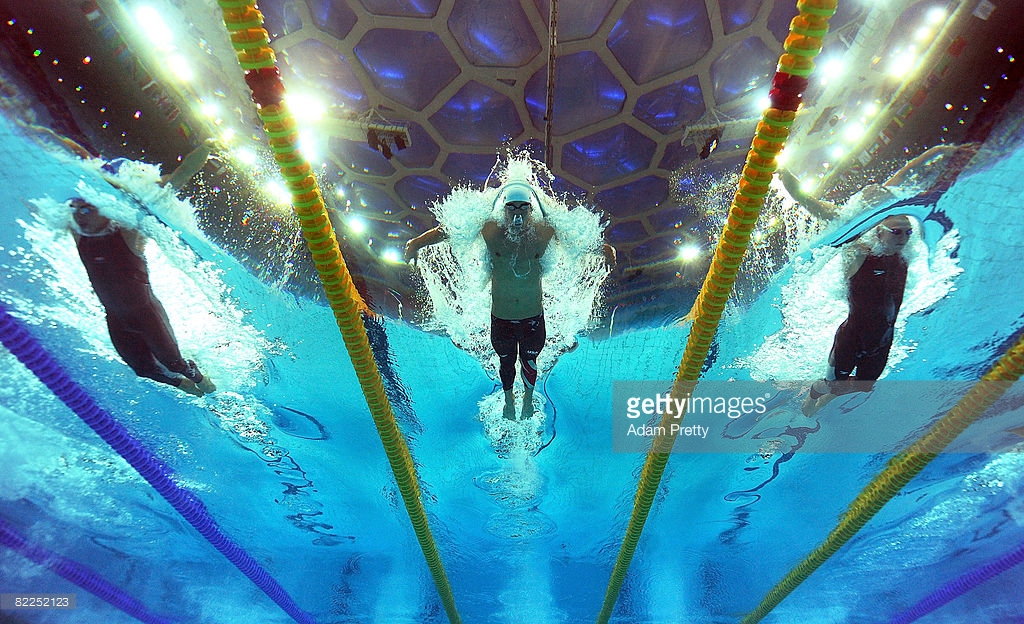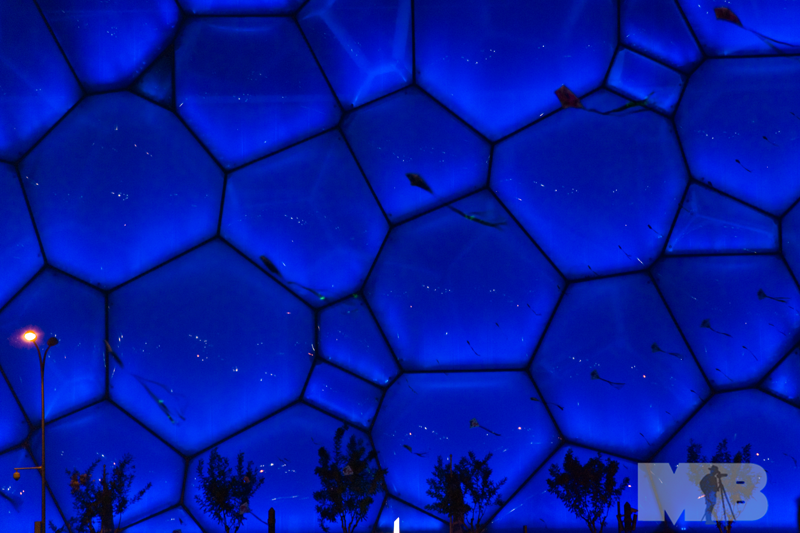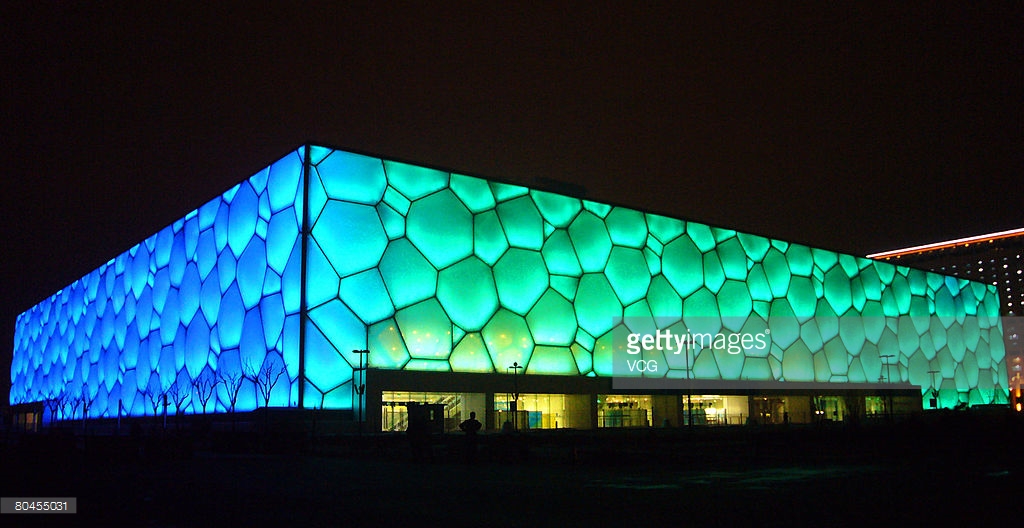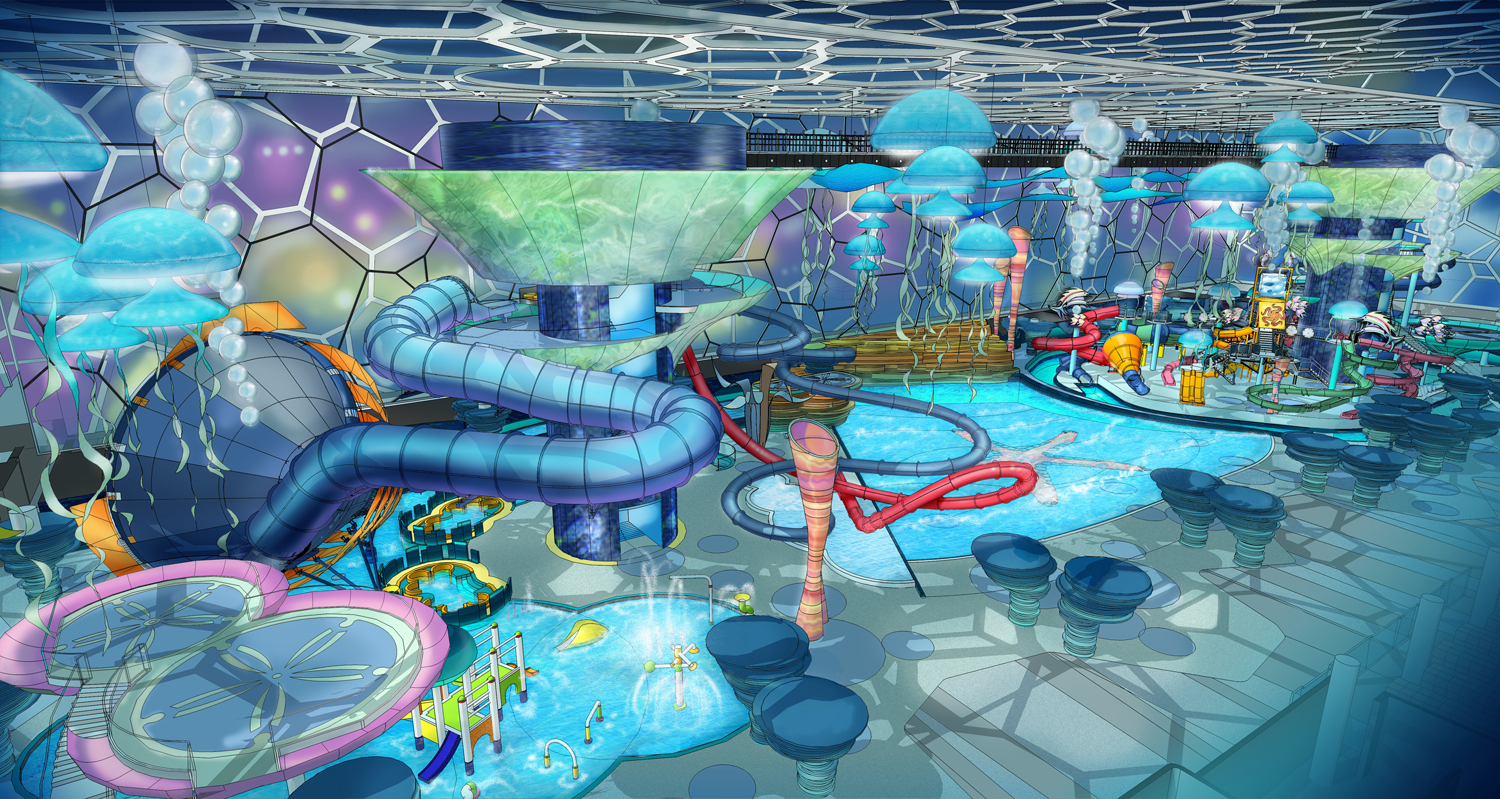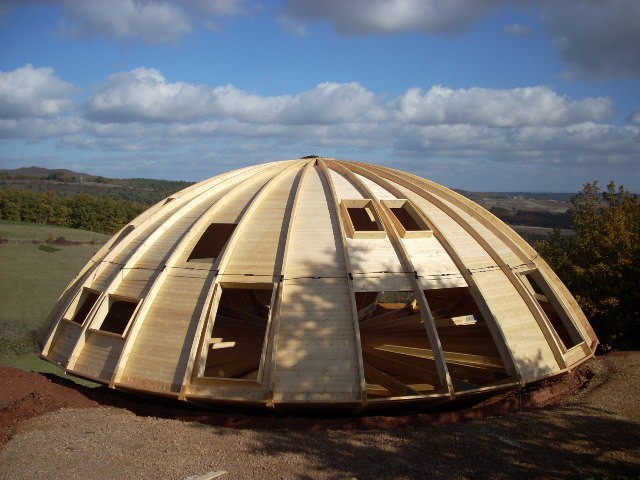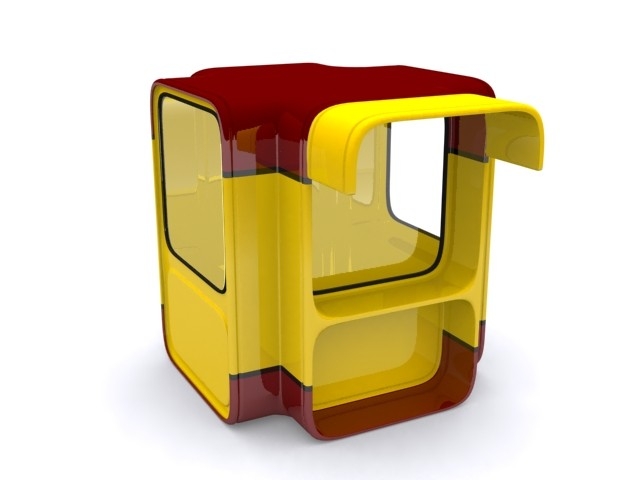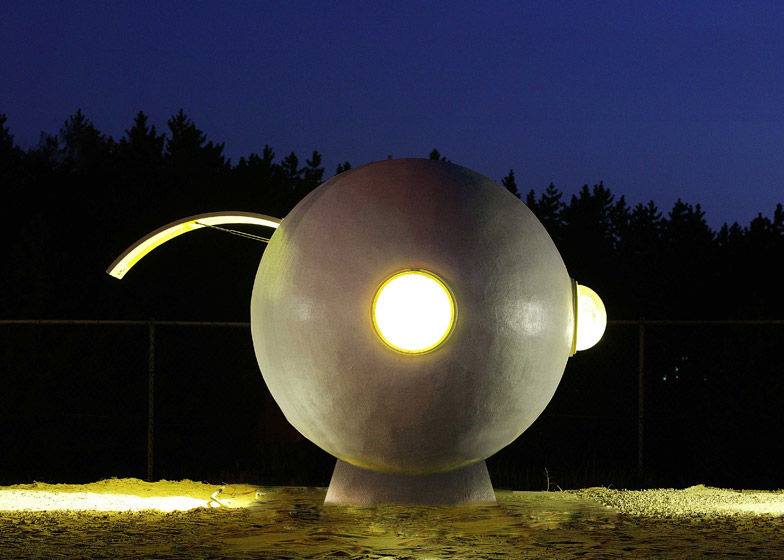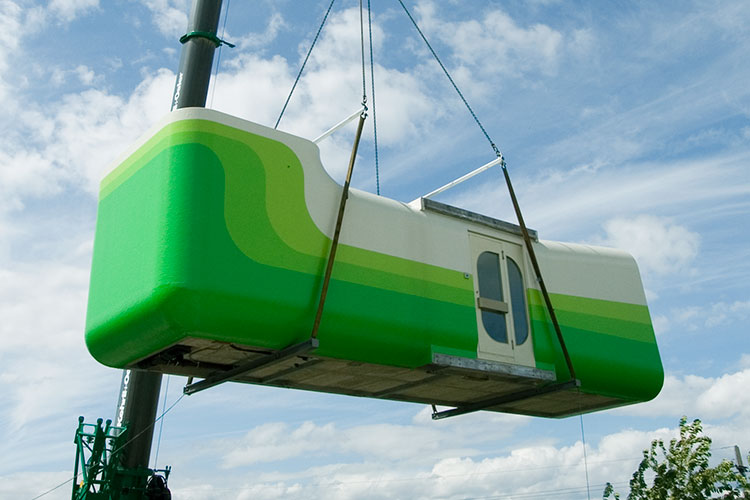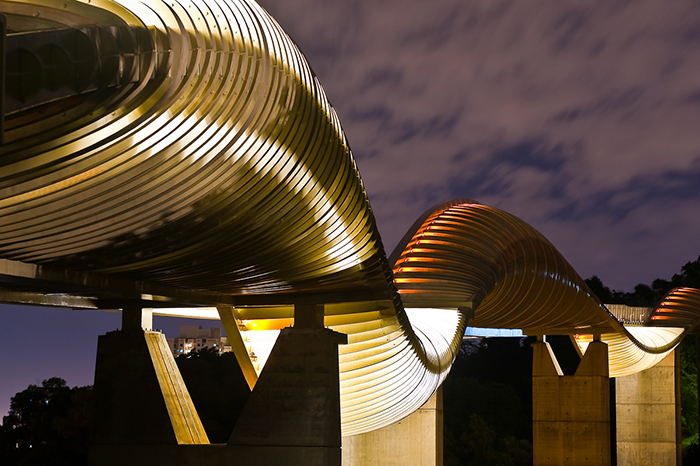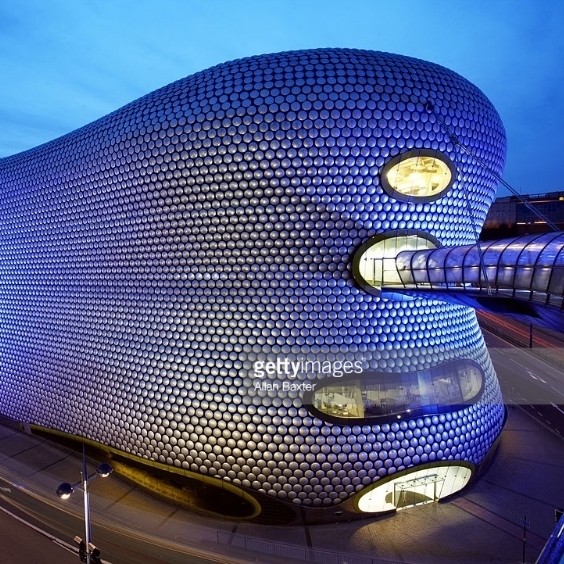The Water Cube (2003-2008) Pekin, China
THE CUBE OF WATER


Name : National Aquatics Center, or Water Cube
Site : Olympic Park
Surface : 65000 – 80000 square meters
capacity : 6 000 fixed seats and 11 000 auxiliary seats.
Function : swimming, plunge, synchronized swimming, water-polo
Start of Construction : 24/12/2003

The National Aquatics Centre or Water Cube On, Site tests “aquatic” Beijing Olympic Games 2008, is as we can see centered on the theme of water. The building also has as cubic dimensions as possible: square 177 m square, it measures 30 m high. 3.500 form the air cushions 110 000 m2 of facade, setting the world record for membrane use ETFE (Ethylene Tetrafluoroethylene) even before the holding of the Olympic competitions.
It exceeds the Munich stadium, l’Allianz Arena, covered the same surface, from 50 000 m2. The membrane is also very thick and can withstand high pressures. Small breaks here and there will have no impact on the building, and will be repaired quickly and easily. Too damaged parts can be replaced independently of the overall structure. The material can also control the level of transparency of bubbles: you can reduce the brightness inside the center, and temperature. security side, the space between the two layers of bubbles is closed, thus preventing overheating. The wind solves the heat dissipation problem of. Eight vents were installed on the roof and the walls. The membrane in ETFE simplifies the cleaning process. It can self-cleaning, with low friction and non-stick flying particles.
For cleaning, simply a little rain to the walls regain their luster. When workers astiqueront surface, she will return quickly and easily brighter than glass. The swimming center is also an ecological structure, through rainwater harvesting system installed on its roof, which can be reused 76% precipitation. Lighting will also economic, through the transparent walls that can do without 9 hours of illumination.
Animation showing the projects in Beijing that the engineering company Arup are involved in including the CCTV tower. National Aquatic Centre “WaterCube” and “Bird nest” The National Stadium for Olympics 2008.
The so-called watercube associates water as a “leitmotiv” structural and thematic with the square, the primitive form of the house in Chinese tradition and mythology. The entire structure of Watercube is based on a unique lightweight, derived from the structure of water in the foam aggregation state. Conceptually the square box and the interior space are carved on an indefinite cluster foam bubbles, symbolizing a condition of nature that becomes a culture condition. The appearance of the aquatic center is therefore a "cube of water molecules” of the watercube”. text: Chris Bosse.
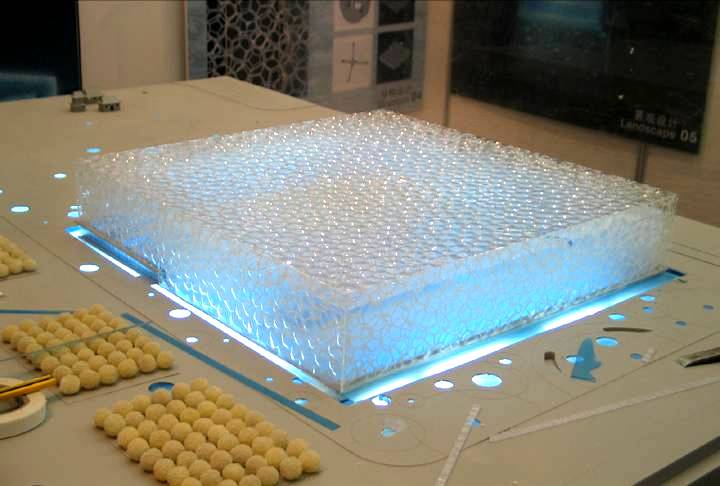 |
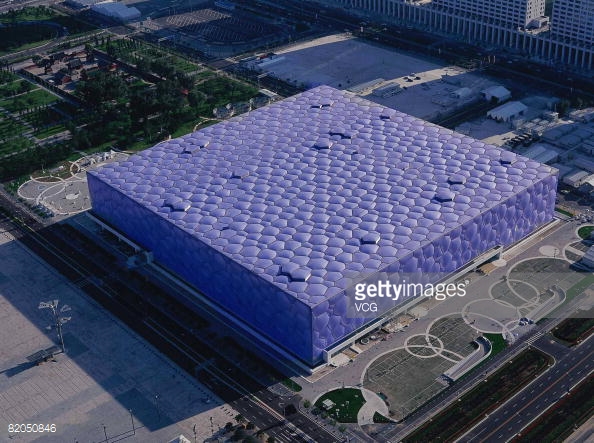 |
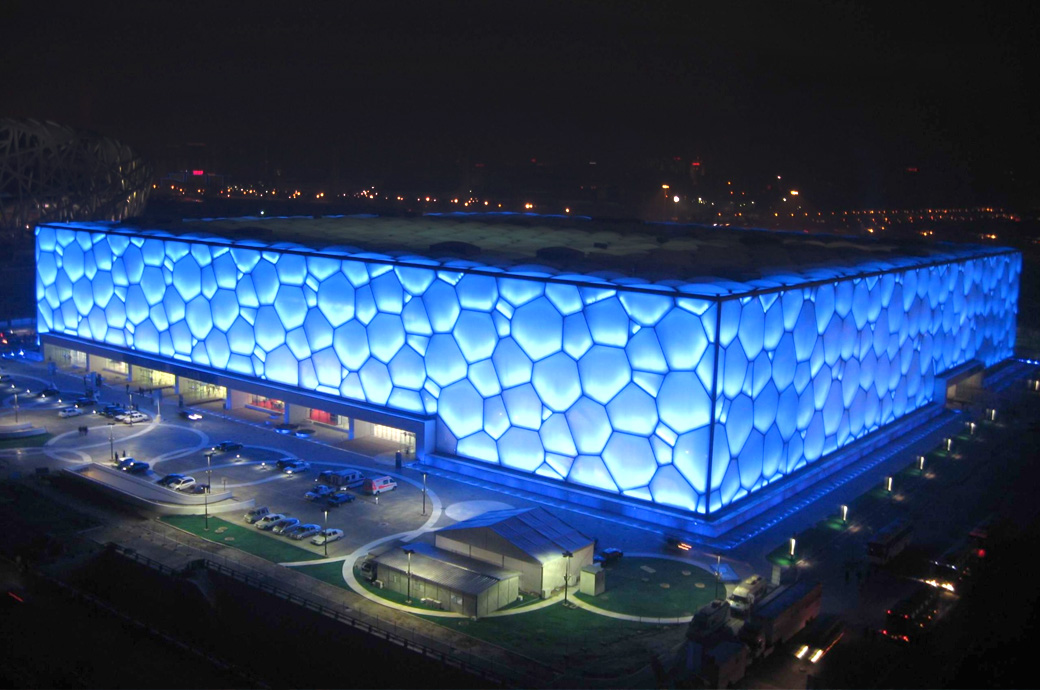
A view of the National Aquatics Center, nicknamed the “Water Cube”, as construction continues, the 26 December 2006, Beijing, in China. Organisers of Olympics 2008 claim that the scene will be completed before the end of 2007.
https://youtu.be/KixBpYcANuc
French documentary : 50:04 (23) Superstructures – The Beijing Water Cube.
The National Center of Beijing Water :
(Simplified Chinese : Beijing National Aquatics Center ; Chinese : Beijing National Aquatics Center ; pinyin : Běijīng Guojia yóuyǒng Zhongxin ), also officially known as National Center swimming, and colloquially known as cube’water ( Chinese : Water Cube ), is a water sports center which was built in side of National Stadium Beijing in the Olympic Park for the swimming competitions of the Olympic Games’was 2008. Despite his nickname, the building is not a real cube, but a parallelepiped (a rectangular box).
The work was the 24 December 2003, and the Center was completed and handed over to use the 28 January, 2008. Swimmers at the Water Cube broke 25 world records at the Olympic Games 2008.
After the Olympics 2008, the building has undergone a 200 million Yuan rearrange to transform half of its interior into a water park. The building officially reopened on 8 August 2010. It will host the curling events at the Olympic Games’ winter 2022.
 |
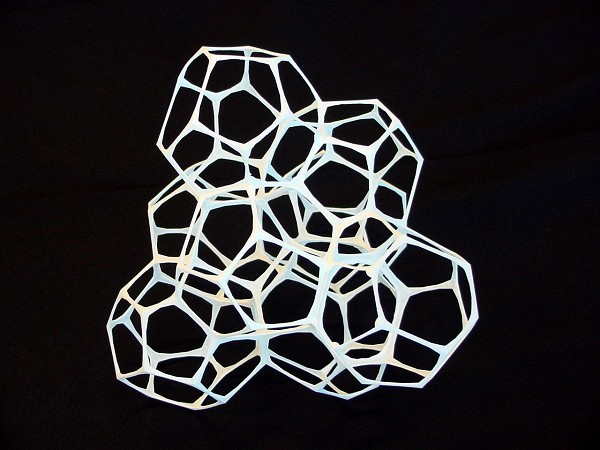 |
 |
 |
A short animation on Beijing National Aquatic Centre a.k.a. Water Cube.
The famous “National Swimming Center” also called the Water Cube stands out for its technological and engineering prowess. An impressive book, one cube of 177 m aside for 30 m high. 3000 form the air cushions 110 000 m² of facade, setting a record for how to use ETFE membrane (Ethylene Tetrafluoroethylene), to obtain the cell appearance D, engineers have created a skeleton made 22 000 membranes interconnected with one another which has led to design constraints of about 57 million combinations. The membrane is also very thick and can withstand high pressures, the building is supposed to be very efficient in energy terms, the coating bubbles panels have the property of absorbing solar energy to heat the pools and building air.
The material used to control the level of transparency bubbles ; one can reduce the brightness inside and outside. The space between the two layers of bubbles is closed, thus preventing overheating. This building reflects the rejection of the traditional figure of the architect-artist. The project is developed on the study of the natural material, the water, nature, plants and axis around a purely structural reflection. The nature and structure will structure the human reflection regaining some thought Japanese metabolists. The construction technique falls within the practice process of the project, advanced technical reconquered constructive complexity and provides some assurance and value to contemporary architecture it lacks strong.
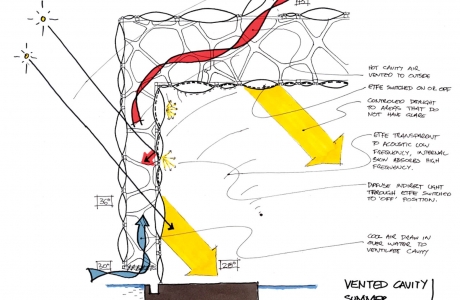 |
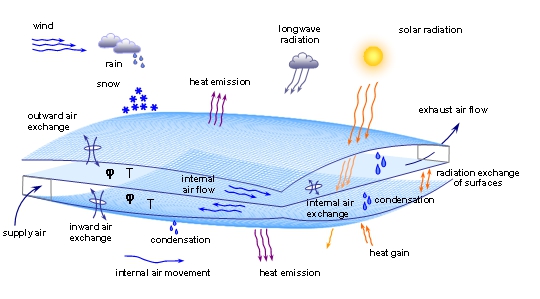 |


The entrance showing the detail of the design of the facade.
Olympic Water Cube light
Architecture In July 2003, the water cube design was chosen from 10 proposals in an international context architectural competition for the aquatic center project. The Cube’ water was specially designed and built by a consortium of PTW Architects , Arup international engineering group, CSCEC (China State Construction Engineering Corporation), and CCBP (China Design International Construction) de Shanghai.
The design of the Cube’ Water was initiated by a team effort: Chinese partners felt square was more symbolic in Chinese culture and its relationship with the Bird's Nest Stadium, while Sydney-based partners , came up with the idea of covering the cube with bubbles, symbolizing water. Contextually the cube symbolizes the earth, while the circle (represented by the stage) represents the sky. Symbolically the water cube references Chinese symbolic architecture. Comprising a frame of steel’ space, he is the tallest ETFE the plated structure in the world with more than 100.000 m² of pillows ETFE who are just 0,2 mm (1/125 inch) Total thickness.
The outer wall is based on the Weaire-Phelan structure, a structure designed from the natural pattern of bubbles in soap foam. In real-Phelan structure Weaire the edge of each cell is curved to maintain 109,5 degrees angles at each vertex (satisfying Plateau rules), but of course , as a structural support system each beam had to be right in order to better withstand axial compression. The Weaire-Phelan pattern complex was developed by slicing through bubbles in soap foam, which leads to, more irregular organic patterns than foam bubble structures proposed earlier by the scientist Kelvin . Using the Weaire-Phelan geometry, exterior cladding Cube’ water is made of 4000 bubbles ETFE, some as large as 9,14 meters (30,0 feet) through, with seven different sizes for the roof and 15 Wall.
The structure has a capacity of 17.000 during the games is reduced to 7.000. It also has’ a total land surface 65.000 square meters and will cover a total of 32.000 square meters (7,9 acres). Although called the Cube’ water, the aquatic center is really a rectangular box (cuboid) 178 meters (584 feet) square and 31 meters (102 pi) height. The building's popularity has spawned many imitations structures throughout Chine.Par example, it is one-to-one copy of the front near the ferry terminal in Macau – the Casino Oceanus by Paul Steelman.
The ETFE coating supplied and installed by Vector Foiltec, allows more light and heat penetration than traditional glass, resulting in a decrease 30% energy costs.

 |
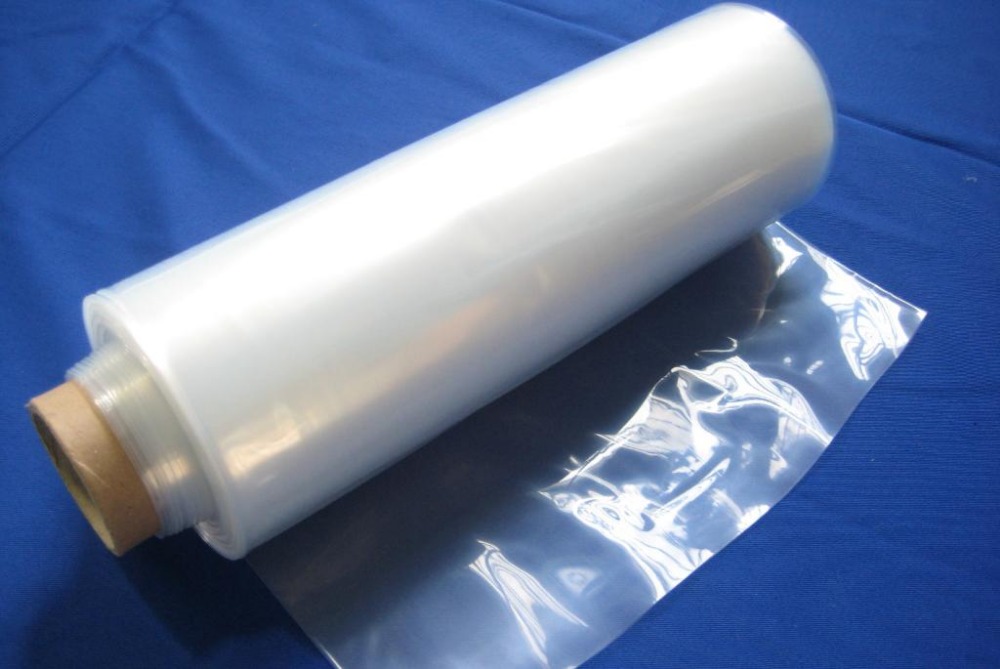 |
 |
 |
ETFE –
Ethylene tetrafluoroethylene (ETFE) is a plastic-based fluorine atom. It was designed to have a high corrosion resistance and strength over a wide temperature range. ETFE is a polymer and its name based on the source is poly (ethylene-co-tetrafluoroethene). ETFE has a relatively high melting point, excellent chemical, electrical and high energy radiation resistance properties. During combustion, ETFE releases hydrofluoric acid .
Its Properties
Useful comparison tables against PTFE FEP , PFA and ETFE can be found on the DuPont site, enumerating the mechanical, thermal, chemical, electric, and vapor properties of each, side by side. ETFE is actually the high-strength version of the three in this group, often with slightly decreased capacity in other areas by comparing. Combustion of’ ETFE occurs in the same way that a number of other fluoropolymers , in terms of release of hydrofluoric acid (HF). HF is extremely corrosive and toxic, and thus appropriate caution should be exercised. An ETFE film is self-cleaning ( due to its anti area – adhesive) and recyclable. It is subject to puncture by sharp edges and therefore mostly used for roofs. As a film for roofing, it could be stretched (until 3 time) and still be stretched if a size variation occurred (IE temperature). Using heat welding, tears can be repaired with a patch or several panels assembled sheets more grands.ETFE has a tensile strength of about 42 MPa (6.100 PSI), with a temperature operating range 89 K 423 K ( -185 ° C 150 neck 300 ° F 300 ° F ). ETFE resins are resistant to ultraviolet light. An accelerated aging test (comparable to the exhibition 30 years) produced almost no deterioration of film sign.
Application –
An example of its use is as pneumatic panels to cover the outside of the football stadium Allianz Arena or the Beijing National Aquatics Center (aka Cube’ Water Olympic Games 2008) – the world's largest ETFE film structure ( laminate ). The panels of the Eden Project are also made of ETFE, and the tropical islands have a window m² 20,000 made of this translucent material. Another key use of ETFE is for the covering of electric cables and optical fiber used in high stress situations, low smoke toxicity and high reliability. Aircraft and wiring of’ spacecraft are primary examples. Some small son section as the wire used for the wire-wrap technology are coated with ETFE. As a layered double, ETFE can be bonded with FRP as a thermoplastic liner, and used in pipes, reservoirs, and the additional protection of ships against corrosion.
ETFE is commonly used in the nuclear industry for tie or cable wraps and aviation industries and the’ aerospace coatings for metal. Indeed , ETFE has better mechanical strength than PTFE. In addition, ETFE has a resistance to high-energy radiation and can withstand moderately elevated temperatures for a long period of time. Commercially deployed brand names of ETFE include Tefzel by DuPont , Flow par Asahi Glass Company , Neoflon ETFE by Daikin and Texlon by Vector Foiltec .Because of its high temperature resistance ETFE is also used in movie mode as a release film. ETFE movie such as Honeywell PMP film is used in aerospace applications such as carbon fiber prepreg curing as a release film for mold or high-pressure hot plates.
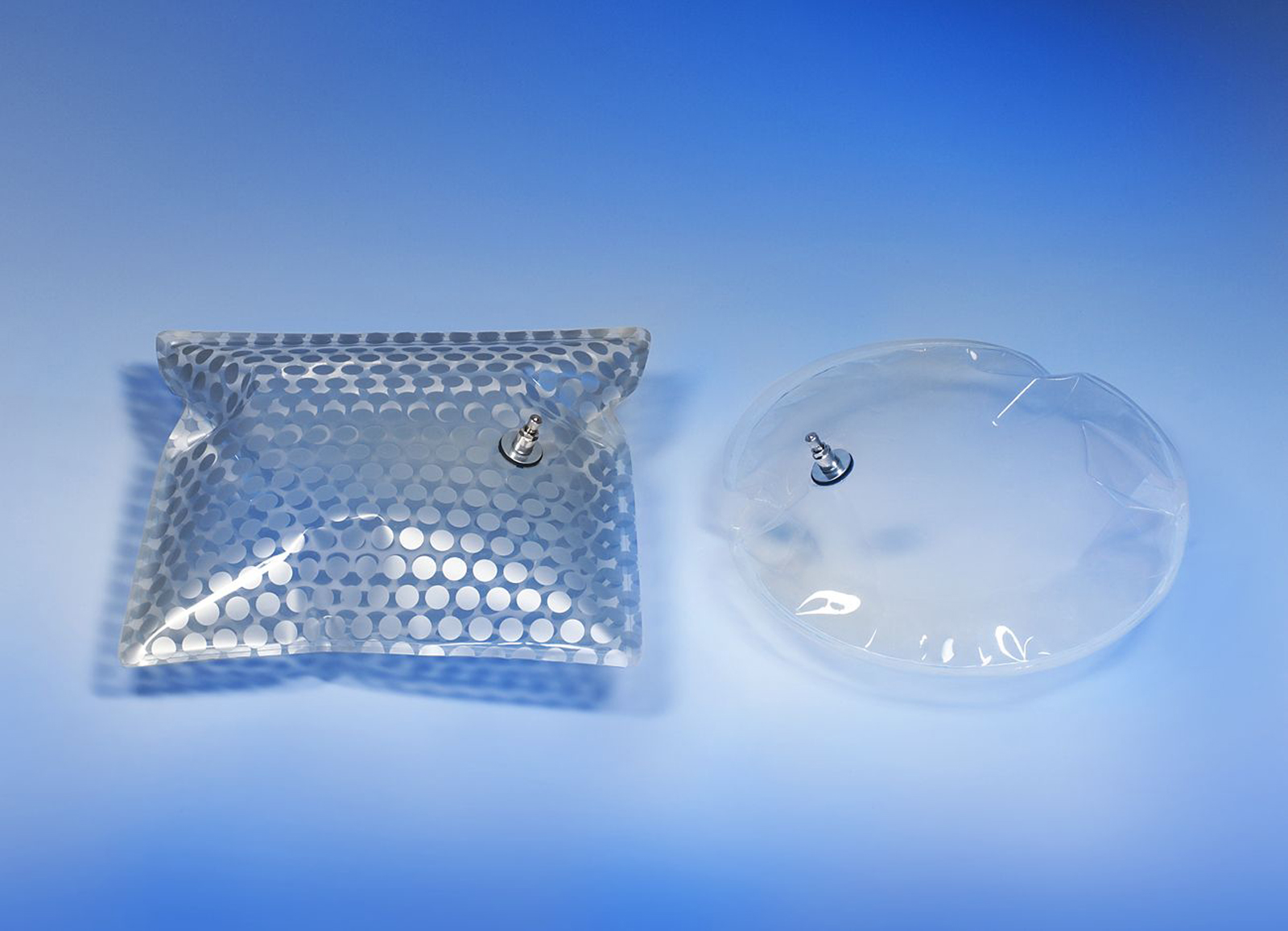
 |
 |

A Chinese safari adventure new UCI: The Tour of Beijing


The UCI World Tour decided to add a new bicycle race in China Guangxi tower for 2017. This will be the 38th and final race of the next season. The UCI also said it maintained training Dimension Data. 18 Teams will therefore present for next season..
 |
 |
Known as the Water Cube is one of the most dramatic and exciting venues of Olympics 2008. structural design of the building is modeled on the natural formation of soap bubbles to give a random organic look. Foils ETFE cushions sitting inside of’ a steel frame structure are used to form the bubbles. DDA worked with Vector-Foiltec, ETFE specialist contractor to optimize the design of the cushions using a relaxation dynamic software by Oasys. A contour plot of surface pressure coefficients of the wind tunnel survey was used to determine the specific pressures through each cushion. The cushions were then FORMFOUND and analyzed to determine the thickness of the sheet and the perimeter loading.


Construction workers at the National Aquatics Center, nicknamed the ” Water Cube ” 2006 Beijing, China.





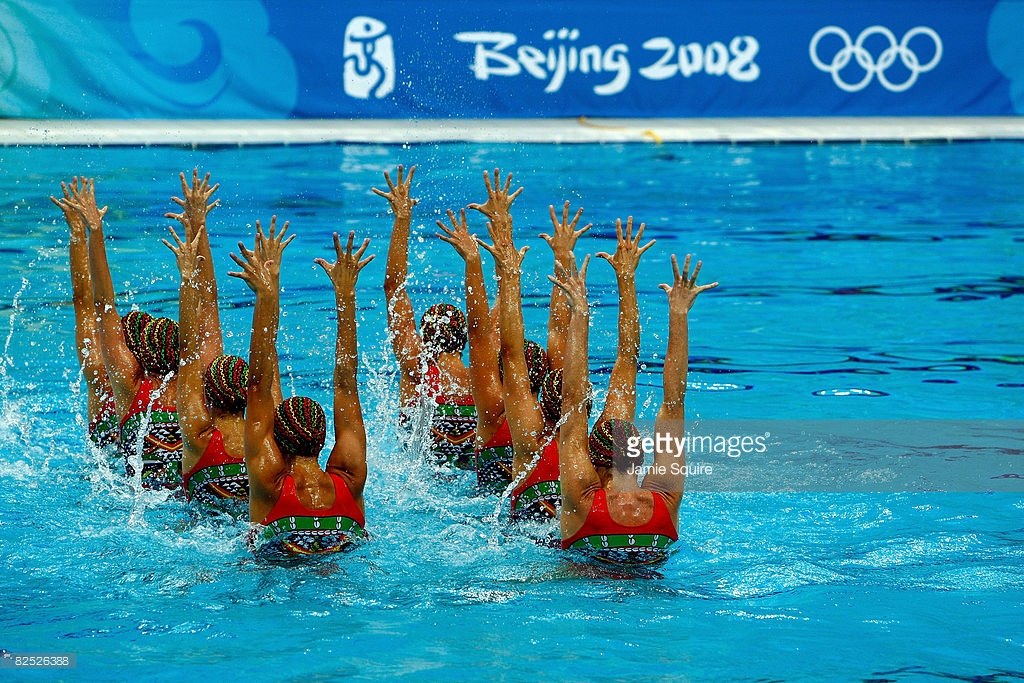
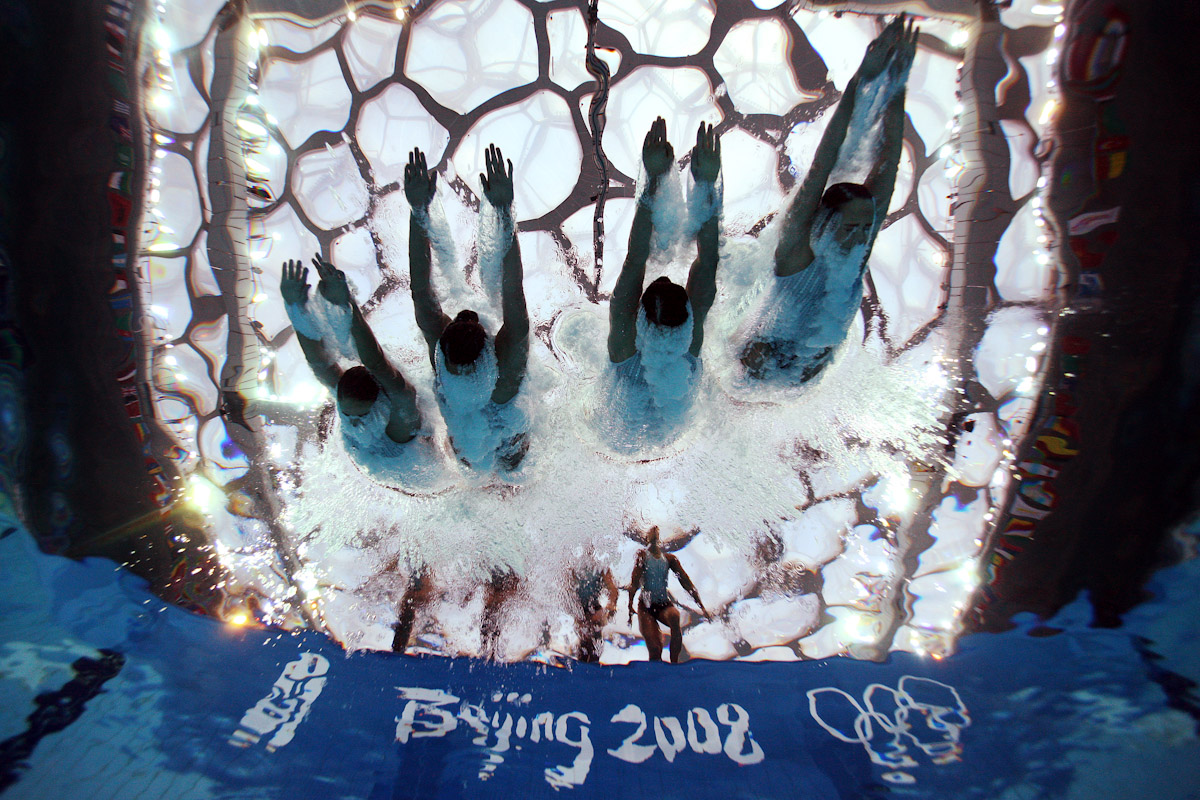
Repair and Cleaners Acrobats of ETFE.
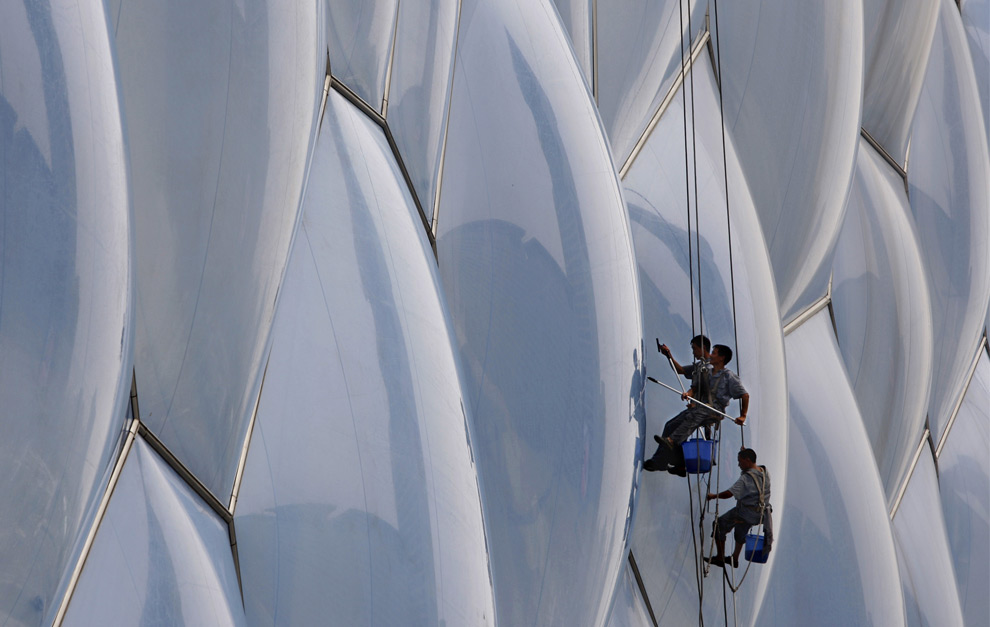
It is the Chinese workers who clean the surface of the national swimming center, known as the Water Cube 14 Avril 2013, Beijuing in china, during Beijing Olympics.
 |
 |
THE CUBE OF WATER is located at 1 km from Beijing National Stadium.
The Beijing National Stadium, also known as the National Stadium, or nicknamed the Bird's Nest for its architecture, is a stadium located in the Olympic Green in northern Beijing, China.
See my article in the most beautiful stadiums in the world


Video of Beijing National Aquatics Center, also known as “the watercube”, which was built for the Beijing Olympics 2008.





At the University of Technology Gymnasium in Beijing before Beijing Olympics 2008 the 3 August 2008 Beijing, in China.



THE CUBE OF WATER TRANSFORMED AT A HUGE WATER PARK !

|
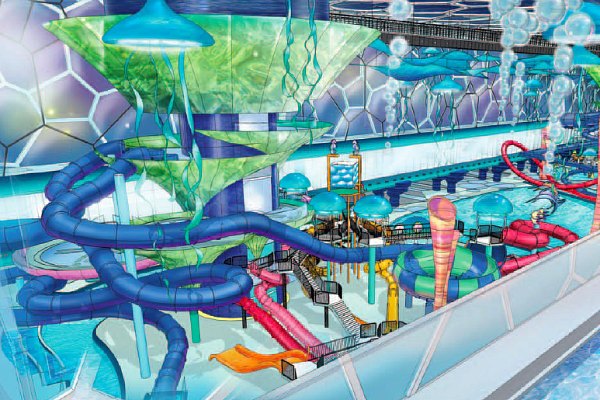 |
After the incredible success of the Water Cube in Beijing for the Summer Olympics of 2008.
The aquatic center has been transformed into an amazing water park (and massive) inside. Rather than leaving the facility record smashing stay there used, the owners have transformed the space into the fantastic Happy Magic Water Park , with slides, a lazy river, a wave pool, jellyfish and floating. Now , the second most visited tourist site in Beijing (after the Great Wall) is a hot spot for’ family activity and the largest water park in Asia.
Forrec, a design firm based in Toronto that specializes in entertainment and leisure, is the origin of the design for the renovation of Cube eau.Forrec, a design firm based in Toronto that specializes in entertainment and leisure, is the origin of the design for the renovation of the Water Cube.
The Cube’ water, originally designed by Australian firm PTW Architects with the help of Arup , was already an outstanding work of architecture which has garnered a number of awards and had some swimming record go to’ inside it – us. With its sparkling facade , daylit interior and incredible energy efficient design, it would have been a shame to let this building sit there. We are therefore pleased that maybe the plant was transformed into a fantastic water playground where families can spend time together.
Happy Magic Water Park recently opened the 8 August after a year of renovations, led by Forrec , a design firm based in Toronto that specializes in entertainment and leisure. A l’ inside , it is a paradise under – magical marine hanging ribbons, blue bubbles and floating jellyfish. There are approximately 10 different “rides” , including a wave pool, snow tubing, speed slides and even a lazy river. Daylighting through the’ ETFE outer pillow still plays an important role in establishing and night, interior lights glow to illuminate the surrounding area. The Olympic pool is still used for the swimming matches, but now the rest of the installation can be used on a regular basis.
Former Olympic Sport Shooting “Watercube” was reopened in 2010 for a water park !
Magic Water Cube – National Center of Beijing Water Park, China.
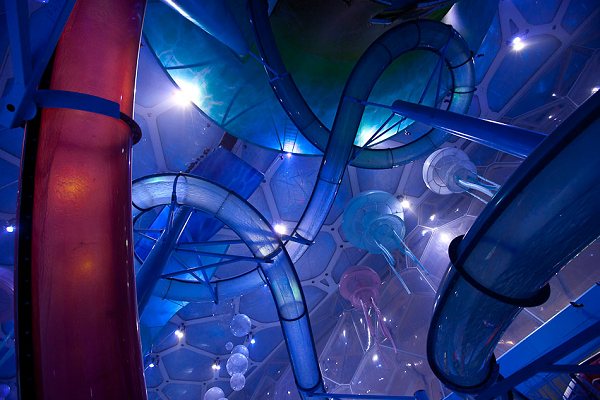 |
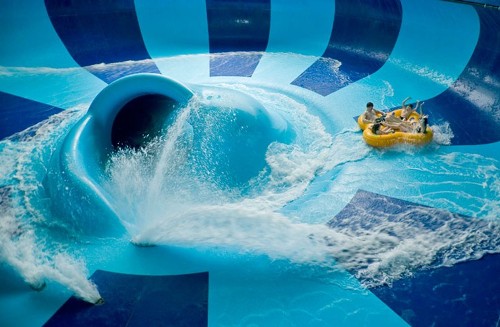 |


 A school of fish overlooking the wave pool at the Happy Water Park built in the Olympic Water Cube in Beijing.
A school of fish overlooking the wave pool at the Happy Water Park built in the Olympic Water Cube in Beijing.


